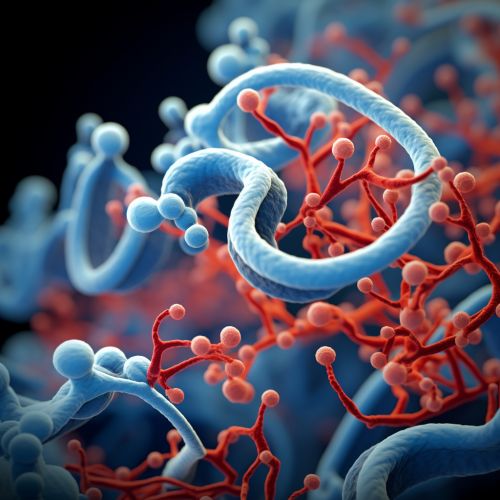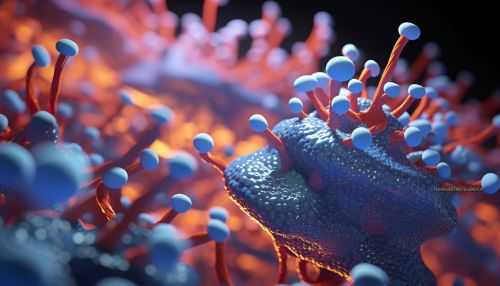Ribosomal RNA
Introduction
Ribosomal RNA (rRNA) is a type of Ribonucleic Acid that plays a crucial role in protein synthesis, a process that occurs within the ribosomes of cells. rRNA is one of the three major types of RNA, the other two being messenger RNA (mRNA) and transfer RNA (tRNA). It is the most abundant type of RNA, making up about 80% of the RNA in a typical cell.
Structure
The structure of rRNA varies between species and is highly conserved, meaning it changes very little over time. In prokaryotes, the ribosome consists of a small 30S subunit and a large 50S subunit, each of which contains rRNA and proteins. The 30S subunit contains the 16S rRNA, while the 50S subunit contains the 23S and 5S rRNA. In eukaryotes, the ribosome is slightly larger, consisting of a small 40S subunit and a large 60S subunit. The 40S subunit contains the 18S rRNA, while the 60S subunit contains the 28S, 5.8S, and 5S rRNA.


Function
The primary function of rRNA is to provide the structural framework for the ribosome and facilitate protein synthesis. The rRNA molecules form the core of the ribosome's structure and allow it to move along mRNA. The rRNA in the larger subunit is where the peptide bonds are formed between amino acids during protein synthesis. The rRNA in the smaller subunit interacts with the transfer RNA to ensure that the protein is made correctly.
Synthesis
The synthesis of rRNA is a complex process that begins in the nucleolus, a small structure within the nucleus of the cell. The genes for rRNA are transcribed by RNA polymerase I into a long precursor molecule that contains the sequences for the 18S, 5.8S, and 28S rRNA in eukaryotes, or the 16S, 23S, and 5S rRNA in prokaryotes. This precursor molecule is then processed and modified to produce the mature rRNA molecules, which are then combined with proteins to form the ribosomal subunits.
Role in Disease
Alterations in rRNA can lead to a variety of diseases. For example, mutations in the genes that encode rRNA or defects in the processing of rRNA can lead to ribosomopathies, a group of disorders characterized by impaired ribosome function. These include diseases such as Diamond-Blackfan anemia and Shwachman-Diamond syndrome. Additionally, changes in rRNA can affect the sensitivity of microorganisms to antibiotics, leading to antibiotic resistance.
